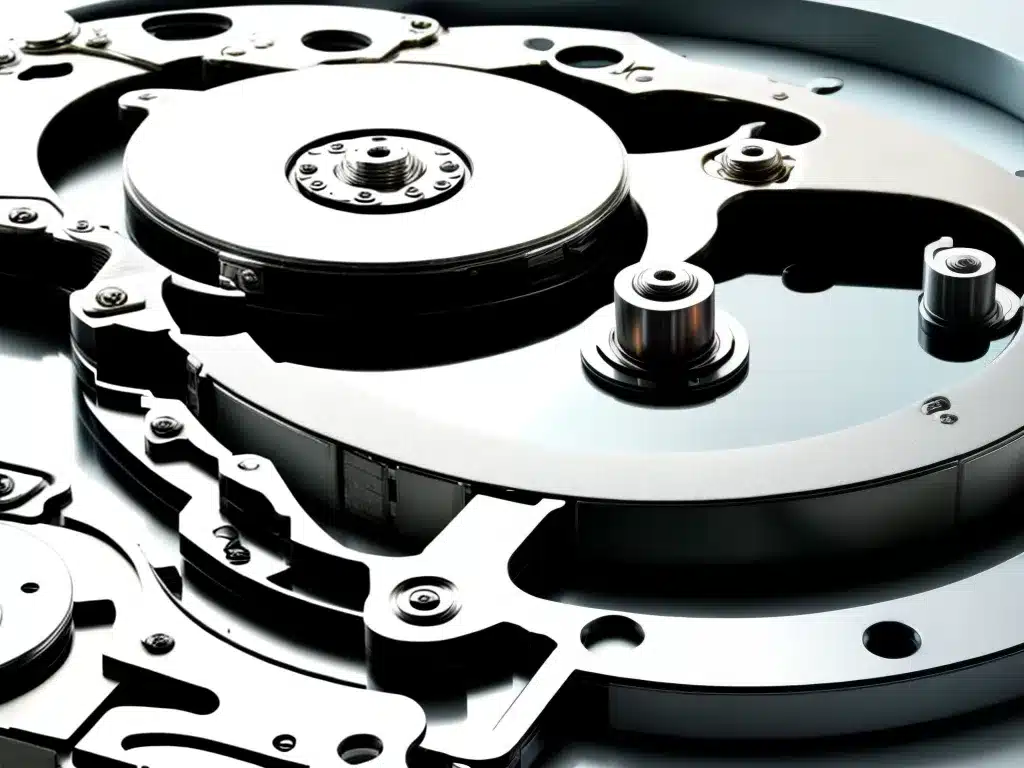Introduction
Recovering data from a failed or damaged hard drive can be a stressful and challenging experience. As someone who has gone through this process multiple times, I wanted to share my knowledge on the best practices for attempting to recover your valuable files and photos when hardware failure strikes.
Back Up Your Data
The best defense against data loss is having a regularly updated backup. But accidents happen, and backups fail or become outdated. If you don’t have a recent backup, data recovery software and services are your next best hope for restoring lost files. Backups should be an ongoing part of your digital life, but data recovery fills in the gap when something goes wrong between backups.
First Steps After Hard Drive Failure
When your hard drive first fails, don’t panic. Power down the computer immediately and remove the hard drive. Handling a damaged hard drive improperly can make recovering data more difficult or impossible. If possible, engage a professional data recovery service at this point. But if you want to attempt it yourself, you need to proceed carefully.
Some key tips:
- Do not power the drive back on – Further use could damage it more.
- Do not open the drive case – This exposes it to contaminants.
- Consider the cause of failure – Physical damage, controller failure, etc.
Understanding the root cause will inform your next actions.
Attempting a DIY Data Recovery
With the right tools, it is possible to recover some data yourself from a failed hard drive. Here are some steps to follow:
1. Get a disk cloning dock or adapter
This allows you to connect the damaged drive to another computer as an external drive. Popular tools include:
- HDD docking stations
- SATA/IDE adapters
- USB hard drive adapters
Handle the failed drive gently and make sure connectors are properly aligned.
2. Clone the drive
Use drive cloning software to make a sector-by-sector copy of the entire drive. Two examples:
- DDRescue (free data recovery tool for Linux)
- HDClone (paid software for Windows)
Cloning captures all recoverable data before attempting repair.
3. Attempt drive repair with recovery software
If the cloned drive doesn’t mount properly, use data recovery software to scan and repair it. Examples include:
- Ontrack EasyRecovery
- R-Studio
- EaseUS Data Recovery Wizard
Repairs can take hours or days, so be patient!
4. Extract and copy recovered files
Use file browser software to access recovered files and copy them to another drive. Avoid saving them to the damaged source drive.
When to Use a Professional Service
For best results, engage a professional data recovery service for:
- Drives with physical damage or noises
- Advanced cases like RAID recovery
- Drives containing critical or irreplaceable data
- If DIY methods fail completely
Pros use specialized tools in certified cleanrooms and have decades of experience. The cost is high but can be worth it for valuable or sentimental data.
Prevention of Hard Drive Failure
While unpreventable accidents happen, you can reduce the likelihood of a catastrophic hard drive failure by:
- Monitoring drive health with tools like S.M.A.R.T.
- Upgrading drives before they fail from old age
- Avoiding shock and heat with proper computer care
- Using surge protectors to prevent electrical damage
- Making regular backups!
Final Thoughts
Recovering lost data requires quick action, specific tools, patience, and care. While professionals achieve the best results, DIY recovery is possible if you take the right precautions. Following these tips will give you the best chance of restoring your files. But backups remain the ultimate solution for avoiding disaster in the first place.
With the right preparation and knowledge, you can overcome a dead drive. But prevention through vigilant backup practices is even better. Use this experience to build improved safeguards for your irreplaceable data.













